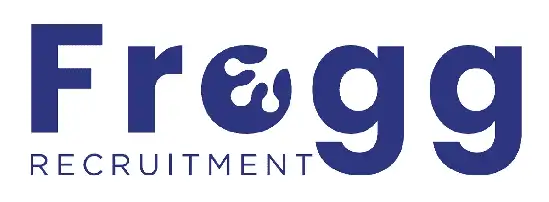Tag: cv builder
-

Cover Letter do’s and dont’s
Continue ReadingCover Letter Do’s and Don’t.
When you apply for a job, you frequently submit a cover letter along with your CV/resume. It is a chance for you to market your application and establish yourself as a qualified candidate. It is referred to as a “letter of introduction” or an “application letter.” Your cover letter shouldn’t be a carbon copy of your CV/resume. It should rather explain why you are the best candidate for the position based on the qualifications shown on your CV. Let’s we discuss the cover letter do’s and don’ts.
Do’s of a Cover Letter.
-
Demonstrate that you have done extensive research.
Conduct thorough research before putting pen to paper for your cover letter. To achieve this, go beyond simply reading the job description. Your research will give you invaluable context and background information. After all, you want to ace the interview and get a job offer right? However, understanding more about the company you want to work for will help you decide how to change the tone of your cover letter. More and more companies are investing in mastering the factors that drive Job Satisfaction.
Here are some details you might want to include:
The name of the person likely to receive your application.
The position you’re applying for.
What the corporate culture of the company is like.
Their standing in the industry and top rivals
Any noteworthy developments or news in the industry recently
The aims and objectives of the business
Whether the business has any difficulties
2. Make a compelling opening statement to get their attention.
As with any writing, the goal is to immediately capture the reader’s interest to avoid losing them. Think outside of the box because many other candidates will use the cliché “I’m applying for this role because…” What makes you unique? What is the most interesting fact about you that people should know? Try to express that you are really thrilled about the position and are a good fit for it.
Think creatively, but we advise against using humour. Although it’s acceptable to be humorous (yet consider each organization individually), keep in mind that this is a professional job application.
3. Demonstrate your contribution’s worth to the business in a clear manner.
This is a broad generalization, but the goal of recruiting a new employee is to locate someone who can assist the company in solving difficulties. Your cover letter should demonstrate to hiring managers how you can contribute to the team or department you’ll be joining by helping them resolve issues. Below we discuss the cover letter do’s and don’ts.
The most effective method to do this is to discuss how your prior professional experience has prepared you to handle obstacles in your career. Thereafter relate those experiences to the position and organization you are applying to.
4. Emphasize your passion for the position.
This new employment opportunity is thrilling since it gives you the ability to advance your career with like-minded coworkers. This is well related to job satisfaction for you as an employee. While working for a business you’ve long liked. You sincerely desire the position. If not, you wouldn’t be applying, right?
Make that very apparent in your cover letter, then. Many other applicants will have the necessary qualifications, some even more qualified than you. The hiring manager will be looking for excitement and commitment to the position. Be sincere and put all your heart into the cover letter; sincerity sells.
When writing, try to utilize language that the hiring manager who will likely review your application would use when speaking with clients. You might need to conduct a little extra research to fully understand this.
5. Say more by saying less.
You might be wondering how much space your cover letter should take up. You cover letter should be no longer than one side of an A4. If it’s longer, why not shorten it? You can practice a written sense of self-management here.
Keep in mind that CV already has a ton of information. Everything that is on your CV is not to be repeated in your cover letter. You can reiterate crucial points that are directly related and relevant to the position. Otherwise, avoid repeating your abilities and prior experience. If you are successful in doing that, you will have more freedom to express your enthusiasm for the position and the letter will be brief enough for the hiring manager to skim it.
Don’ts of a cover letter.
Avoid these common cover letter mistakes:
-
Avoid reiterating material from your resume.
Certain cover letters only restate the resume’s content in writing form. Think about the benefits a cover letter can give to your application. Make sure it contains additional information not found on your resume and further establishes your position as a candidate. Always make sure to present an updated resume, this is crucial as your interest will show.
2. You claimed that the position would help you advance your skills.
Even while it very well may be the case, it is not appropriate to mention in your cover letter how much you would love this position because it would allow you to advance professionally. Keep in mind that you should highlight your strengths rather than how this position will benefit you.
Some applicants spend a significant amount of the space in their cover letter describing why they believe the position is ideal for them or how long they have desired to work there. Even though the data is flattering, you could want to add useful data that emphasizes your strengths as a worker and what you have to offer.
3. Don’t concentrate on your existing position or qualifications.
Your career history, including your schooling, is valuable. Instead of repeating it, use the space in your cover letter to explain why it is important. Instead of listing your degrees, for instance, describe what you learnt and any skills you acquired during the process. Describe how your knowledge and talents are a benefit to the business.
4. Do not submit an unrevised cover letter.
Your cover letter serves as your introduction. If there are any spelling or grammar mistakes in your letter, that will be the company’s first impression of you. Write several drafts of your cover letter as many times as necessary before choosing the one that will be submitted.
5. Avoid using too many keywords.
Some software detects when a text contains an excessive number of a particular keyword and either rate it poorly or discards it. Write your cover letter with well-structured sentences and planned thoughts. Make your information count because a real person will read your cover letter after it passes the software assessment.
In conclusion, although cover letters are not usually needed, they are used by hiring managers to evaluate an applicant’s qualifications, experience, and background. Writing an excellent cover letter requires demonstrating how your professional background fits the requirements of the available position and the company’s culture. For more related topics or advice follow our social pages, Facebook, LinkedIn and Instagram.
-
-

10 Red Flags on a CV That...
Continue Reading10 Red Flags on a CV That Employers look for
A recruiter will review a CV before determining if the candidate is a good fit or not. As a result, they have mastered the skill and are fully aware of their surroundings. On the one hand, they seek out precise keywords and a format that is simple to understand. On the other hand, they are searching for errors and other significant warning signs. These errors are detrimental to your career but making them on your resume can be particularly harmful. Joining a company that embraces Employer Branding is helpful. Let’s take a look at 10 red flags that employers look for.
How to address these red flags head-on to increase your chances of getting an interview is provided below.
An unprofessional email address
Your email address is at the top of the page and glaringly obvious to the recruiter/employer. Warning sign number one is – an unprofessional email address. The first red flag is an unprofessional email address. You ought to have a straightforward and expert email address. If for some reason you don’t, setting it up requires a few minutes. Use your last name and first initial or first and last name when creating your professional email address.
Poor formatting
Poorly structured resumes are more difficult to read and make it difficult for recruiters to discover important information. It’s not just an issue of appearances. Even if you’re a good fit, poor formatting may result in problems with applicant tracking systems (ATS). Poor formatting on your resume, including glaring errors, shows that you didn’t put much thought or work into it. This may make a potential employer question if you’ll put in just as little effort if you land the job. This also depends in part on you and in certain cases on the preferences of the recruiter. Use a free CV template to get started.
Unexplained employment gaps
Unemployment gaps are a standalone warning flag, but gaps in employment without justifications make it more obvious. Your employment history may contain gaps for a variety of reasons. Maybe you were dealing with health issues, taking care of a family member, or you just decided to take a career vacation. Whatever the cause, be as truthful as you can about your whereabouts and your activities. Don’t go too personal, please. The minute particulars are not required. Your employment history should be presented in your cover letter with a precise and succinct explanation. Perhaps during your time off, you gained some crucial new knowledge or encountered situations that were pertinent. You might even go into more detail about how this has made you better at your job.
Lack of career progression
Employers seek candidates who desire to prosper and advance with the business. Your resume should demonstrate how your career has advanced. When you have been inactive for too long, you may wonder why. A candidate’s irregular career path or absence thereof may have been due to a variety of legitimate factors. Candidates who frequently change jobs or resign from them give the impression that they lack commitment and loyalty.
Wording mistakes
The errors in your resume reveal a lack of attention to detail. Although it might seem obvious, you’d be amazed at how many people get this wrong. These grammatical errors are obvious from a distance. Consider it from the perspective of the employer. Your best work should be highlighted on your CV. If it’s riddled with errors, you’re conveying the wrong idea. Hint: Have your resume edited by at least two people. Then, before submitting your application, make sure to proofread it multiple times.
Job hopping
Job hopping, which is described as regularly changing employers, typically has a bad connotation. These days, employers look for more than simply experience. They prize flexibility, a thirst for knowledge, and a variety of talents. Each hop could stand for your desire for development and dedication to lifelong study. You are moving toward bettering yourself, not away from, anything.
A red flag on your resume will almost always be raised by brief stays and unexpected departures. Your CV shouldn’t shout, “I’m probably going to leave as soon as my training is finished,” because employers prefer workers who are in it for the long haul. As a jobseeker, you should always research companies that believe in company values.
Too much (or too little) information
When it comes to resumes, more isn’t necessarily better. The first impression you want to give is not one of being out of touch with professional standards, which is what happens when you provide the incorrect information.
Too many personal details make you appear unprofessional and increase your vulnerability to discrimination. On the other side, leaving out vital facts like your contact information makes you appear unprofessional and negligent and makes it harder for employers to contact you. Including your complete street address on your CV won’t likely prompt recruiters to throw it away. However, they will be searching for other signs of professionalism (or a lack thereof). If you’re still not sure where the fine line between too little or too much information is, HOW TO WRITE A CV.
Underscoring Results While Overemphasizing Responsibilities
It might be challenging to succinctly express your professional abilities in a way that sets you apart from the competition. Candidates frequently wind up overemphasizing their duties, which comes out as conceited. This might turn off employers.
Even though you are a renowned leader or a forward-thinking thinker, those statements ought to be made about you rather than by you. Do not assert any obligations or make any representations about them that cannot be supported by facts. Include a former boss or supervisor who can attest to your accomplishments as a reference if you can.
Lack of Measurable Successes
If you don’t quantify your accomplishments in previous positions, potential employers might suspect that you’re lying on your CV. It’s critical to show the results efforts have yielded in addition to making sure you get credited for your contributions.
Concentrate on accomplishments that meet the needs of the recruiter and highlight how you delivered the intended results for these efforts. Adding percentages or numbers within predefined times is an excellent way to accomplish this. Positions in sales and marketing are particularly pertinent to this.
Skills that Are No Longer Valuable
The use of general skills like “Microsoft Word” or “Excel” in your CV shows that you might not have any more in-demand abilities. Since you lack the requisite abilities or knowledge, it suggests that you are not a good fit for the position.
To help employers rapidly decide whether you have the necessary credentials, try providing 5 to 10 specific and pertinent talents. Make sure your CV is targeted to the position you’re seeking and highlights the most significant elements of your background, skills, and expertise.
In conclusion, the next time you think of applying for a job, revise these CV red flags, and proofread your application before applying. For more content like this, follow our social pages on Facebook, LinkedIn, and Instagram.
-

How to write a CV/Resume
Continue ReadingHow to write a professional CV/Resume
You will find insightful information, tips, and guidance on how to write a CV/Resume in the article below. In today’s competitive job market, it’s essential to present a tactful and well-outlined resume. Are you looking for a FREE CV TEMPLATE?
Job Seekers should know how to apply to jobs they qualify for in the sense of requirements and job duties. Job seekers should read the job advertisement carefully and only apply if they are a match.
Know what a good CV entails and ensure your CV/resume is up to par. With the correct knowledge as to what a CV consists of, nothing can stop you from making one that stands out from the crowd. Click on this link to create your own CV
What to write in your CV (Curriculum Vitae) also known as a Resume.
Your CV, or resume outlines your qualifications to recruiters and prospective employers. This document includes details information about your persona, and professional background, education, accomplishments, and skills selling yourself as the most suitable candidate. It contains details about your persona, professional history, educational background, accomplishments, and skills. Click here to view this article on LINKEDIN
The steps below will serve as a guideline regarding how to write a CV/resume:
Personal information
Personal information includes your name, surname, date of birth, in addition to languages that you speak and your contact information such as your mobile number and email address so that employers who you are and how to reach you. Below your personal information, include a brief summary outlining your career and introducing yourself to the recruiter or employer. This is ultimately a very condensed version of what your cover letter would say.
Education
Ensure that you list your educational history, both secondary and tertiary on your CV. Education listed on your CV is always listed in reverse chronological order with your most recent educational qualifications first. Should your current qualification be a completed degree it will be listed first and secondary education would be the last high school you attended and graduated from. Should you be in the process of pursuing another qualification of sorts, that will be listed above your completed qualifications.
Relevant skills
Under the skills section of your CV, list any potential skills that apply to the potential job. This can be any skills that you have acquired acquired outside of your current or previous employment. Examples are software proficiencies like Microsoft Word, Excel, and PowerPoint etc. These are considered as part of the prerequisites or otherwise stated as minimum requirements. Try to include skills that relate to the job description to make yourself a more desirable candidate.
Attributes
A personality trait known as an attribute can enhance your ability to perform within a team or an as individual in a working environment. It is seen as a quality or feature regarded one’s character. It works to describe you as an individual who is passionate in sales and marketing, dedicated or loyal. Its works describe your strengths. It can also describe functional words like being strong in management, people skills, analytical, or technical aligned.
Employment history
It is important to detail your current employment and previous employment history so your prospective employer can see your career path and this is what determines whether you are fit for the business of your prospective employer. This can include; full-time and part-time employment, internships, research projects such as WIL (Will Integrated Learning), lab work, volunteer work, and/or field experience.
Employment history is also consistently listed in reverse chronological order, being your current or last position first, and is almost always listed in bullet point format. Here, you will list the title of the work, name and location of your current/previous place of employment. Below these titles, you will list your job responsibilities performed.
References
References are your former employers who you provide the contact information of so that they may attest to your character, abilities, and work performance. Recruiters use your references to double-check what you’ve written on your CV. Therefore, it is of utmost importance that you are honest as this reflects as part of your personality, character, and values.
If you want to find our more about what we do as one of the top staffing agencies, view Our Expertise. Feel free to follow us on our social pages Facebook, LinkedIn, Instagram.



